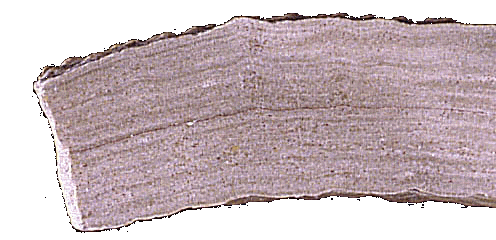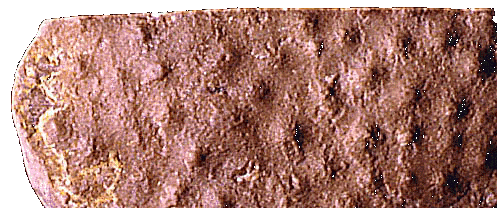Stromatoporoids


New updated information is on this August 2019 page. Updated information on this taxon can be found on this blog post from July 2018. The stromatoporoids had massive calcareous skeletons that are preserved as rather conspicuous fossils. A cross-section is shown above, while a view down on the
living surface is presented below. Some stromatoporoids formed domes in excess of 5 meters in diameter. The stromatoporoid grew by secreting calcareous sheets. This growth process resulted in layers, termed laminae, parallel to the substrate and rod-like pillars perpendicular to the laminae. The layers closest to the surface of the skeleton probably contained living tissue; those layers away from the surface appear to have been back-filled with calcite.
The surface of the skeleton, where most of the living tissue resided, has raised structures called mamelons, presumably serving as sites for excurrent openings. Associated with mamelons are canals called astrorhizae. Very similar structures, observed on living sponges of the genus Astrosclera, represent excurrent
canal systems. This is strong evidence that fossil
stromatoporoids were poriferans.

There are two main groups of fossil stromatoporoids that lived in different eras,
the Paleozoic
and the Mesozoic.
The fossil record of the earlier group begins in the Ordovician and persists until the Early Carboniferous. After their appearance, the Paleozoic stromatoporoids quickly became dominant reef builders, and persisted as such for over 100 million years. They are absent in the fossil record between the Early Carboniferous and the Late Permian. The second group of stromatoporoids, from
the Mesozoic, may represent a distinct group with a similar growth form.
The Mesozoic stromatoporoids are again important contributors to reef formation, especially during the
Cretaceous. Several living sponges would be classified as stromatoporoids in this second group if
found as fossils, and these can be assigned to
the Demospongia based on soft parts.
Their diversity is reflected in the overall
diversity of Demospongia through time.


